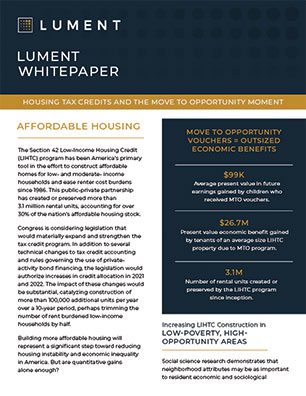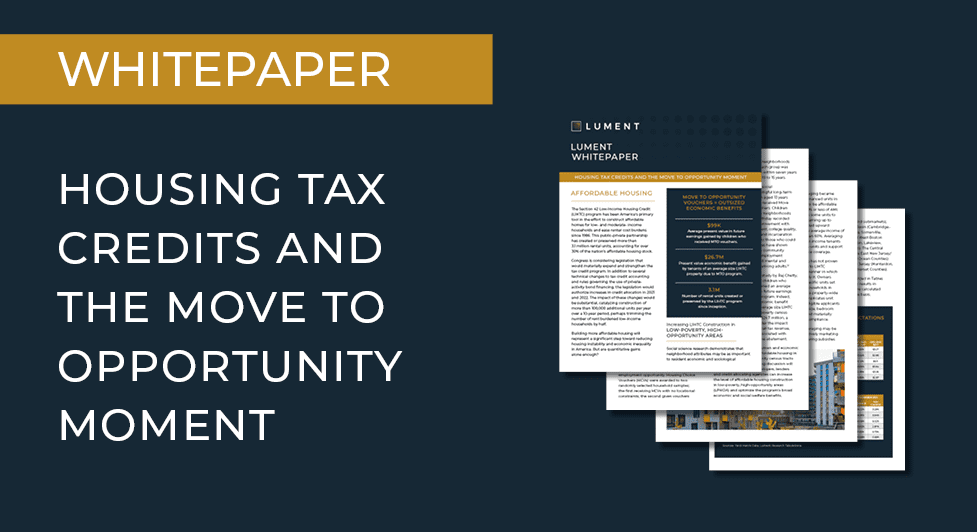Research by social scientists demonstrates that low- and moderate-income households benefit from living in “high opportunity” neighborhoods that offer greater access to employment, quality education, healthcare, nutrition and outdoor recreation. Work by Stanford economist Raj Chetty shows that children growing up in high opportunity communities are significantly more likely to attend college and marry and are likely to earn $300,000 more over the course of their careers than peers living in a high-poverty area.
In other words, place matters.
But building affordable housing in high opportunity neighborhoods is challenging. The price of land, site improvements, and utilities arrangements are often higher in opportunity-rich communities, making deal economics difficult to reconcile.
Fortunately, tools are available to help developers and sponsors overcome these obstacles, including Low-Income Housing Tax Credits (LIHTCs) and mixed-income marketing strategies. Still, these are complex transactions that require expert legal, accounting and marketing support and a highly experienced capital partner, like Lument, to be successful.
To learn more about how states can encourage LIHTC development in low-poverty neighborhoods, and how developers and sponsors can employ techniques to advance such transactions, download our whitepaper.

